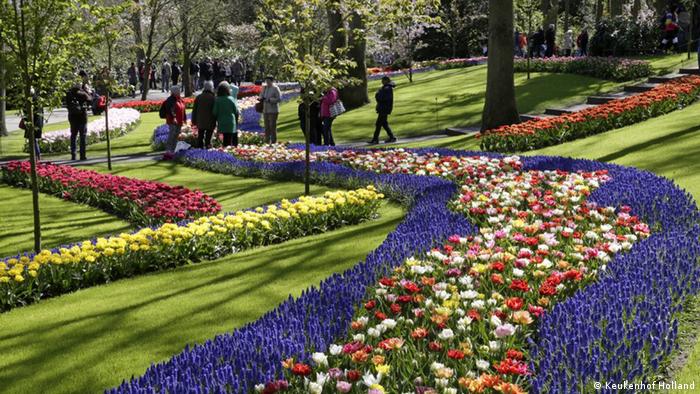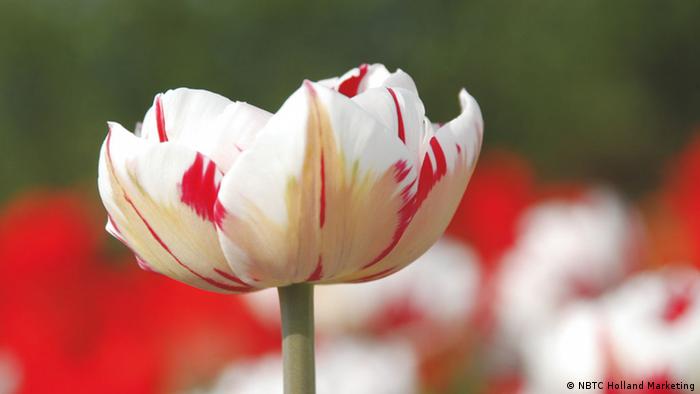Travel
All Tulip!
Now is the time where the North of the Netherlands transformed into a colourful sea of Flowers. The Tulip season is the tourist Highlight in the spring.
-

Flower fields
The Dutch are the world’s number one of the Flower exporters and operate 80 percent of the Tulip trade. There are around 4000 different types of Tulips. In the autumn on fields planted, Shine from the middle of March is in full bloom to the horizon.
-

So the spring smells
Over fields and beds of flowers scent in the air. After tulips, Hyacinths and daffodils, the scent is also at the peak of the Tulip season in Holland, on 23. April. Then Bollenstreek pull in the “bloemen Corso” decorated floats through the streets between Haarlem and Leiden.
-

Keukenhof
The estate, Dating to 1642, is now the point of attraction in the Region Bollenstreek. In the over 30-hectare Park, blooming onions from mid-March until the end of may, seven million flowers. Each year, more than 800,000 visitors from all over the world come to the small Town of Lisse in the Netherlands, to experience in the Keukenhof, the big flower show.
-

Why the Tulip Tulip is
Originally the Tulip comes from Central Asia. Your flower shape is called in Turkish “Tülbent”, because it resembles a Turban. This led to the name “tulipa turcarum”, “Tulip of the Turks”. But actually Tulip in Turkish, “Lale”.
-

How the Tulip came to Europe
Over 400 years ago traveled Ogier Ghiselin de Busbecq as Ambassador of the Emperor of Austria to Constantinople, in the then Ottoman Empire, today Istanbul in Turkey. In the gardens of the Sultan’s tulips originated in Persia flourished. As a gift to the Diplomat and botanist flowers sent bulbs and seeds to Vienna.
-

Career of a flower
The low countries, Charles de l’Écluse came seeds as an Imperial gardener in Vienna in the possession of Tulips. In 1593 he became a Professor at the University of Leiden in Holland and grow tulips out of scientific interest. Presumably the thieves stole onions from his garden to sell to you. The tulips spread. The demand for highly-colored specimens.
-

Expensive Tulip
In the 17th century. Century became the Tulip to the Queen among the flowers. Up to 10,000 guilders were offered for one bulb of “Semper Augustus”, a multi-colored, with white tape, the Tulip. So a lot of cost at the time a town house in Amsterdam. The Ur-Form of this historic Tulip is extinct, today there are breeding in captivity, with similar gradients.
-

Tip for tulips
Anyone who wants to prevent tulips over the edge of the Vase continue to grow, fills only a little water, or punctures to the Stem below the flower several times with a needle. So the growth is inhibited. The purists of the Tulip, but your freedom and love you in a half-withered state, if it is raining around the Vase petals.
Author: Ille, Simon
-

Flower fields
The Dutch are the world’s number one of the Flower exporters and operate 80 percent of the Tulip trade. There are around 4000 different types of Tulips. In the autumn on fields planted, Shine from the middle of March is in full bloom to the horizon.
-

So the spring smells
Over fields and beds of flowers scent in the air. After tulips, Hyacinths and daffodils, the scent is also at the peak of the Tulip season in Holland, on 23. April. Then Bollenstreek pull in the “bloemen Corso” decorated floats through the streets between Haarlem and Leiden.
-

Keukenhof
The estate, Dating to 1642, is now the point of attraction in the Region Bollenstreek. In the over 30-hectare Park, blooming onions from mid-March until the end of may, seven million flowers. Each year, more than 800,000 visitors from all over the world come to the small Town of Lisse in the Netherlands, to experience in the Keukenhof, the big flower show.
-

Why the Tulip Tulip is
Originally the Tulip comes from Central Asia. Your flower shape is called in Turkish “Tülbent”, because it resembles a Turban. This led to the name “tulipa turcarum”, “Tulip of the Turks”. But actually Tulip in Turkish, “Lale”.
-

How the Tulip came to Europe
Over 400 years ago traveled Ogier Ghiselin de Busbecq as Ambassador of the Emperor of Austria to Constantinople, in the then Ottoman Empire, today Istanbul in Turkey. In the gardens of the Sultan’s tulips originated in Persia flourished. As a gift to the Diplomat and botanist flowers sent bulbs and seeds to Vienna.
-

Career of a flower
The low countries, Charles de l’Écluse came seeds as an Imperial gardener in Vienna in the possession of Tulips. In 1593 he became a Professor at the University of Leiden in Holland and grow tulips out of scientific interest. Presumably the thieves stole onions from his garden to sell to you. The tulips spread. The demand for highly-colored specimens.
-

Expensive Tulip
In the 17th century. Century became the Tulip to the Queen among the flowers. Up to 10,000 guilders were offered for one bulb of “Semper Augustus”, a multi-colored, with white tape, the Tulip. So a lot of cost at the time a town house in Amsterdam. The Ur-Form of this historic Tulip is extinct, today there are breeding in captivity, with similar gradients.
-

Tip for tulips
Anyone who wants to prevent tulips over the edge of the Vase continue to grow, fills only a little water, or punctures to the Stem below the flower several times with a needle. So the growth is inhibited. The purists of the Tulip, but your freedom and love you in a half-withered state, if it is raining around the Vase petals.
Author: Ille, Simon

